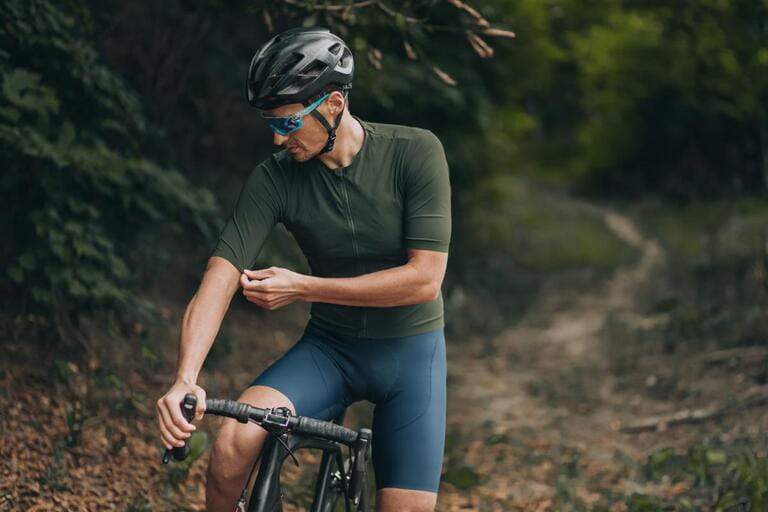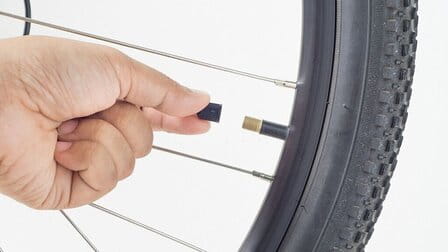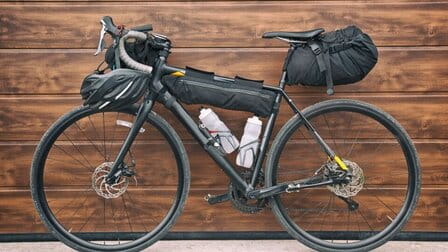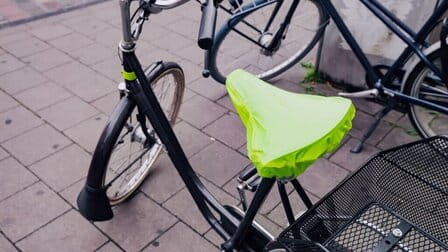Cycling for a long distance, easy to encounter traffic jams, and sweat on the body when coming to work, not to mention your company does not have a shower or bathroom.
Heatwaves can linger, which is great news if you like the sun but isn't ideal for your cycling life if you struggle to cycle in the heat.
Cycling in the heat can be a lot more appealing than venturing out on a harsh winter day, but it comes with its own set of challenges that your body needs to overcome to cope with the heat.
You don't have to stop yourself from enjoying your bike ride by a heat wave, as long as you take some precautions to avoid heat and dehydration.
Here are some simple tips you can follow to help you avoid some of the common pitfalls of cycling in hot weather.
How To Avoid Sweating While Cycling

Cycle at a moderate speed
The benefits of cycling exercise have long been scientifically proven. However, in order to get the maximum benefits for the body from cycling, it is necessary to meet the right basic techniques, in which cycling speed is also an important factor.
Cycling at a fast speed will make you lose strength and sweat a lot, when you arrive at work you will feel tired, in addition, the body will no longer be fragrant from the beginning of the working hour. Meanwhile, if you cycle too slowly, you may be late for work, affecting your work.
Therefore, it is ideal that you should cycle at a moderate pace to limit calories burned and reduce sweating, while still ensuring effective working hours. The recommended average cycling speed for exercise bikers is between 12km/h and 20km/h in flat road conditions.
Limit carrying heavy objects in backpacks

When going to work, you will definitely need to bring a backpack containing the necessary items for work such as laptop, phone, notebook, paper, pen, etc. Or if you go cycling, you can bring food and drinks with you. For convenience in moving, as well as saving energy when cycling, you should equip yourself with the most compact items possible, limit carrying unnecessary items, too heavy or too bulky in a backpack.
In case you often need to carry a lot of items, you should equip your bike with a bag or cart to carry things, limiting the situation of having to carry a backpack on your shoulder during cycling.
Choose the suitable clothes for cycling
It's really unnecessary to wear specialized cycling clothes. Instead, you should flexibly choose the clothes that make you most comfortable during cycling such as clothes made of elastic, cool materials, not too tight on the body. Besides, you should also equip yourself with sports shoes or shoes of moderate height for more convenience when cycling.
With a wide range of technical cycling clothing now available on the market at a variety of price points, there's really no reason to throw yourself into a long-sleeve winter coat when it's 30 degrees and sweltering hot. . Lightweight material with comfortable properties will help cool you down and prevent uncomfortable sweat build-up.
A full-length zipper at the front can help you regulate your temperature, and the lightweight lining can also help remove and evaporate sweat from your skin. The breeze you create by cycling has its own cooling effect, and sometimes it's only when you stop that you really appreciate how hot it is.
Fingerless gloves are a better idea than going without gloves, as sweaty palms can hurt when gripping the handlebars. Thin, sweat-wicking cycling socks are also very cheap to buy from any cyclist retail store.
A well-fitting pair of shorts is also essential, any rubbing on your delicate parts by sweat can very quickly cause uncomfortable aches and pains. You should wear sunglasses with 100% UV filter lenses to avoid damage to your eyes and prevent dust, insects or flies from getting into your eyeballs.

Keep the body hydrated
One of the biggest hurdles to cycling in hot weather is staying hydrated. You'll sweat more as your body tries to cool itself naturally, but that sweat will evaporate quickly, which means it'll be difficult to gauge exactly how much water you're losing.
Take sips and more often when cycling, and make sure you carry plenty of drinks with you or know places where you can refill your drinks along the way.
It's amazing how much you can drink on a hot day – drinking two full bottles on a long trip is quite normal. The worst thing you can do is only drink when you're thirsty, taking sips from the start of the trip until the end.
Drinking an electrolyte drink can be a good idea to replace the substances lost through sweating, which can cause cramps. Packing ice cubes in a bottle before leaving will help keep your drink cool, at least for the first half hour.
The more actively you cycle, the more sweat you will sweat, so if it's really hot and you're starting to feel it, get a quick drink, slow down, or shorten the time. ride time. And don't forget all your drinks, be mindful that you've eaten enough on your ride.
Apply sunscreen
While some cyclists boast their tan as a badge of honor, others are embarrassed to look as if they're still wearing a white t-shirt when topless. Those funny tans aren't the main concern, though – damaging sunburns and the risk of skin cancer from overexposure to UV are a concern.
Apply sunscreen to exposed parts of your body: arms, legs, face, and especially the back of your neck. The position above your bike means that the area in front of your legs, above your knees and calves will get more sun exposure than other areas of your legs.

Cycle on bike lanes, limit traffic on congested roads
To ensure safety during cycling, of course, you must make sure to follow the rules when participating in bicycle traffic. Specifically, bicycles should only be cycled on bicycle lanes, for sections of roads that do not have dedicated bicycle lanes, they need to stay close to the inner curb.
Besides, you should also prioritize choosing open roads, with less traffic, this will both help you avoid traffic jams and save time to your workplace.
Cycling to work earlier, this helps you both exercise and avoid rush hour, and can feel the fresh air. To start a new working day happy and full of energy.
If you live quite far from work, you have just started cycling to work. Try cycling gradually from 2 days a week, then 3 days to 5 days a week, to let your body get used to this new vehicle.
Check the car and the weather before going out
To keep your bike running smoothly and avoid unwanted problems on the road, you need to check your bike regularly, especially before cycling to work. For example, check the tire pressure, brake system, or see if there are any abnormalities on the parts of the bike.... To be more sure, bring your pump and bike repair kit with you. by my side.
Besides, you should also check the weather forecast before going out to have the best preparation when cycling to work. Invest in yourself a waterproof jacket and bring a raincoat to avoid getting wet on bad weather days!
Ride in the morning or evening
One very obvious way to avoid the severity of the sun's rays is to avoid the hottest parts of the day for your bike ride. There's plenty of sunshine on summer days, so going outside early in the morning or late in the day still means you're riding in warm conditions without much danger.
Riding in the morning or evening can have its own benefits such as quieter roads or you might spot wildlife that often hides when the sun is high.
If you're riding at night, make sure you're equipped with lights just in case you're enjoying yourself too much as the sun goes down. Riding at night can also be fun with the right set of lights – you'll literally see familiar roads in a strange new light.
It might also be a good idea to pack a light windbreaker or a vest in your pocket after an evening trip if the weather turns cool as the sun goes down.

Conclusion
Here are ways to avoid sweating while cycling that you can apply. It will help you have a better experience when cycling as well as improve your health and endurance. Make yourself a good habit to always be ready for a new journey with your bike.













